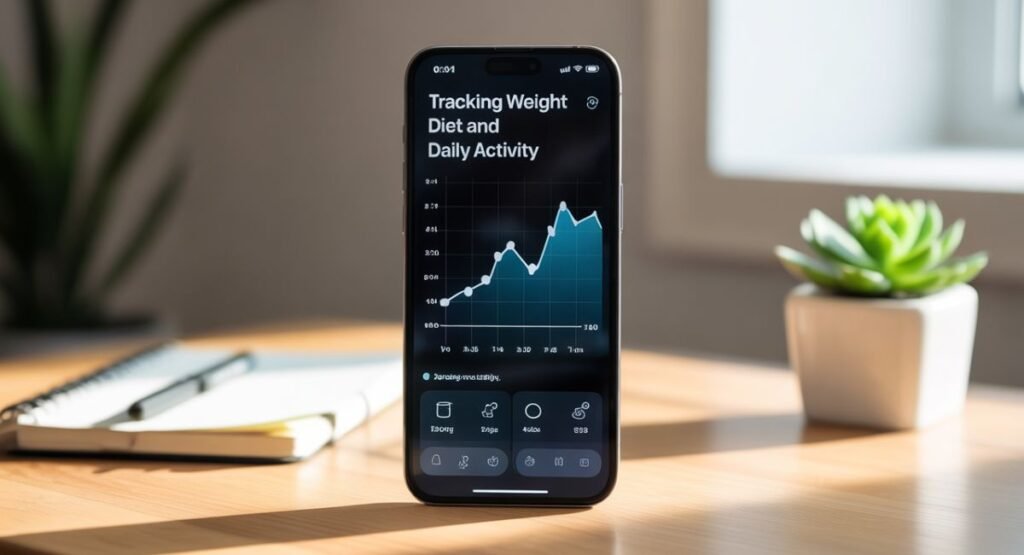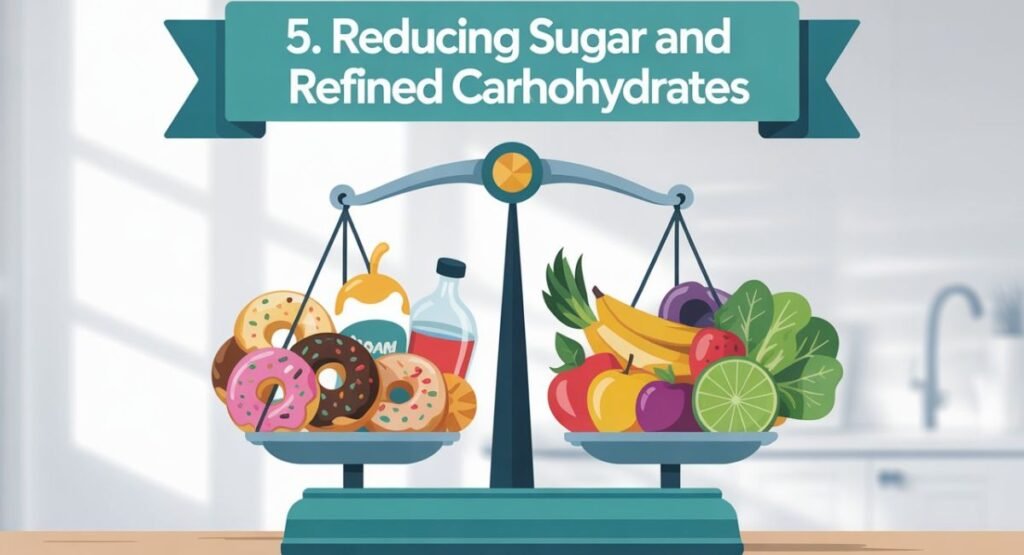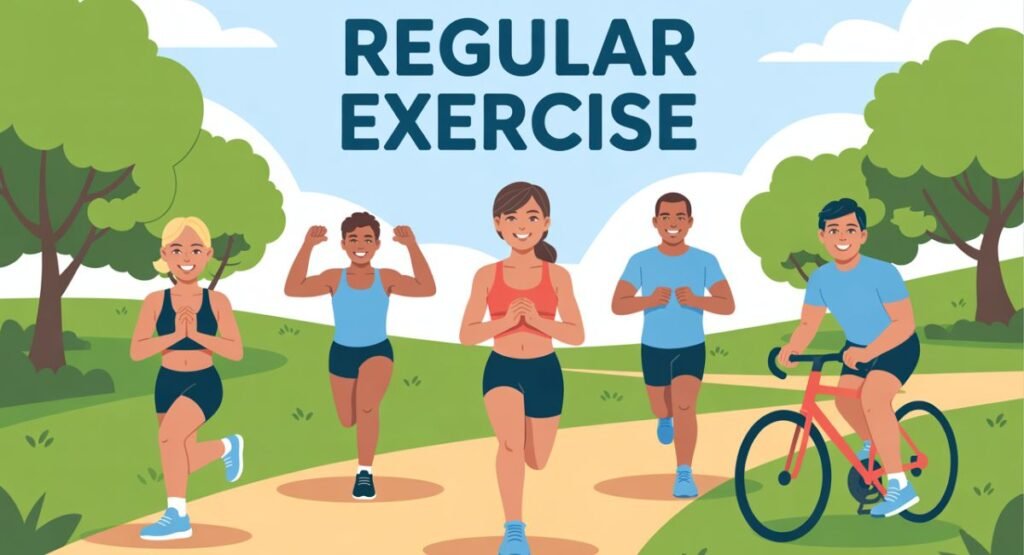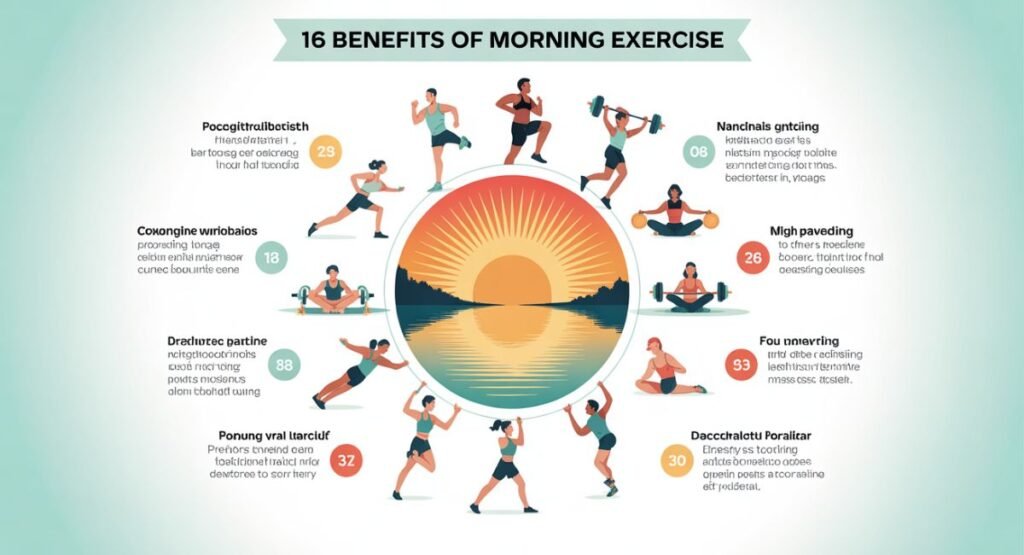Introduction
When it comes to rapid weight loss methods, people in the U.S. often fall for diets that promise miracles but fail to deliver. The truth is, only safe weight loss strategies grounded in science really last. By using lifestyle changes for weight loss, like better eating, sleep, and movement, you can create a calorie deficit for weight loss naturally. In this guide, you’ll explore effective weight loss tips that don’t rely on pills or extreme fads but instead promote sustainable long-term weight management.
If you’ve been searching for a safe way to shed pounds, learning how to naturally lose weight fast can be life-changing. Unlike crash diets or extreme workouts, this approach focuses on safe weight loss strategies that truly work. By combining effective weight loss tips such as mindful eating, balanced nutrition, and consistent exercise, you can achieve results without harming your health. Many people want quick results, but the secret lies in making lifestyle changes for weight loss that last. This guide will reveal proven methods, supported by science, to help you achieve natural fat burning, more energy, and sustainable long-term results.

1. Intermittent Fasting for Quick Fat Loss
One of the most popular intermittent fasting methods is the 16:8 time-restricted eating pattern, where you fast for 16 hours and eat during an 8-hour window. Another option is the 5:2 diet plan, which includes two low-calorie fasting days each week. Even the alternate-day fasting style has shown success in creating a healthy calorie deficit for weight loss.
Research shows that intermittent fasting supports natural fat burning by balancing satiety hormones (ghrelin, leptin, and peptide YY). This helps control hunger and reduces overeating. However, fasting is not suitable for everyone. People with diabetes or certain health conditions should speak with dietitians/nutritionists before starting.
2. Tracking Weight, Diet, and Daily Activity
Monitoring your daily choices makes a difference. Keeping a food journal/calorie tracker or using wearable activity trackers increases awareness of what you consume. Studies in the U.S. show people who log meals consistently have higher success rates in weight tracking and logging.
Digital apps can track steps, calories, and sleep. This helps you notice patterns and identify areas to improve. Recording your progress makes it easier to stick with safe weight loss strategies over time.

3. Eating Mindfully to Avoid Overeating
Mindful eating techniques train you to slow down and enjoy each bite. Many Americans eat in front of screens, which leads to poor awareness of fullness cues. When you pause and chew slowly, your brain has time to register satisfaction, which aids fiber for satiety and digestion.
You can start by sitting at a table without distractions and savoring food flavors. Research shows this approach lowers calorie intake naturally and contributes to sustainable long-term weight management.
4. Adding Protein to Every Meal
A high-protein diet for weight loss supports fullness and helps maintain muscle. Protein influences satiety hormones (ghrelin, leptin, and peptide YY), which control hunger. In the U.S., top sources include Greek yogurt, lentils, chia seeds, lean chicken, eggs, and seafood.
Protein is also critical for muscle preservation during weight loss. Eating 1.2–2 g per kg of body weight daily can reduce hunger, protect lean tissue, and improve recovery from exercise. Consulting dietitians/nutritionists ensures balance.
5. Reducing Sugar and Refined Carbohydrates
The average American diet is filled with soda, candy, and white bread. These foods increase weight gain. Choosing healthy swaps (herbal teas, fruit-infused water) or switching to whole grains vs. refined grains lowers calorie intake and boosts health.
Cutting back on these foods prevents insulin resistance and cortisol spikes, which often lead to fat storage. Replacing sugary snacks with nuts or fruit is one of the most effective weight loss tips.

6. Increasing Fiber Intake for Satiety
Fiber for satiety and digestion slows down the release of sugar into the blood. This prevents cravings and helps you feel full for longer. In the U.S., common fiber sources include beans, vegetables, oats, and seeds.
To compare fiber density, see the table below:
| Food Item | Fiber per 100g |
| Lentils | 8g |
| Chia seeds | 8 g |
| Whole wheat pasta | 34 g |
| Broccoli | 3g |
Adding fiber-rich meals supports safe weight loss strategies without hunger.
7. Improving Gut Health for Better Metabolism
Your gut hosts billions of bacteria that affect how your body uses calories. Eating prebiotic and probiotic foods like yogurt, kefir, sauerkraut, and oats can improve gut health and probiotic balance.
Balanced bacteria increase natural fat burning and decrease fat storage. Americans who include foods such as miso, bananas, and beans enjoy stronger digestion and better lifestyle changes for weight loss.
8. Prioritizing Sleep for Faster Results
Poor sleep weakens the sleep and metabolism connection. A short rest raises ghrelin (hunger hormone) and lowers leptin (fullness hormone). This makes you overeat. Lack of sleep also increases insulin resistance and cortisol, which leads to belly fat.
Improving sleep hygiene, such as avoiding screens before bed and sticking to a schedule, supports safe weight loss strategies. Aim for 7–9 hours each night for better results.

9. Managing Stress to Control Weight Gain
Chronic stress leads to unhealthy eating. The stress and weight gain link is tied to high cortisol levels, which increase appetite and abdominal fat. Stress also drives cravings for sugar and carbs.
Stress management techniques (breathing, meditation, and visualization) reduce these effects. A study showed participants using relaxation methods lost more weight than those who did not. This highlights the value of stress reduction for effective weight loss tips.
10. Staying Active with Regular Exercise
According to CDC exercise recommendations, adults should get 150 minutes of moderate activity each week plus two strength training sessions. This improves exercise for weight loss maintenance and boosts heart health.
Regular movement increases energy use, strengthens bones, and elevates mood. Exercise combined with a calorie deficit for weight loss is one of the most powerful ways to achieve sustainable long-term weight management. Staying active with regular exercise is one of the most effective ways to lose weight naturally. Activities like walking, jogging, and strength training help burn calories and protect muscles. Following CDC exercise recommendations ensures balanced activity for better results. Exercise also boosts metabolism, making weight loss more sustainable. It improves energy, mood, and overall long-term health.

11. Natural Drinks and Foods That Boost Weight Loss
Certain beverages support natural fat burning. Green tea, lemon water, and apple cider vinegar improve digestion and metabolism. Healthy swaps (herbal teas, fruit-infused water) also replace sugary sodas that cause fat gain.
Adding hydrating foods like cucumbers, watermelon, and soups improves hydration and water intake. Proper hydration alone supports safe weight loss strategies because thirst is often mistaken for hunger.
You can accelerate your efforts by including natural foods and beverages that promote weight loss. Apple cider vinegar, lemon water, and herbal teas are examples of options that promote fat burning and digestion. Foods such as Greek yogurt, lentils, and chia seeds keep you full longer. These choices regulate satiety hormones (ghrelin, leptin, and peptide YY) naturally. Making these healthy swaps helps your body burn calories more efficiently while maintaining energy.
12. Myths About Rapid Weight Loss You Should Avoid
Many Americans still believe in the risks of crash diets and fad diets. Promises of “lose 10 pounds in three days” are misleading and harmful. Such plans may cause gallstones and nutrient deficiencies.
Real safe weight loss strategies take time and effort. Always remember, the tortoise wins the race, not the hare.
13. Frequently Asked Questions
Can you lose 10 pounds in 3 days naturally?
It is not safe. Extreme methods often lead to dehydration, weakness, gallstones, and nutrient deficiencies.
Is it possible to lose 20 pounds in a month safely?
That’s unrealistic. A better approach is 1–2 pounds per week through healthy diet balance and exercise for weight loss maintenance.
What happens if you lose weight too fast?
You risk losing muscle, not just fat. This slows metabolism and makes sustainable long-term weight management harder.
14. Summary & Key Takeaways
The best way to learn how to naturally lose weight fast is by using proven methods like intermittent fasting methods, mindful eating techniques, and exercise for weight loss maintenance. Avoid shortcuts. They harm health more than they help.
By focusing on lifestyle changes for weight loss, you build habits that last a lifetime. Remember, progress may be slower than fad diets, but the results are real, lasting, and safe.




Pingback: How Many Miles Should You Walk A Day For Weight Loss